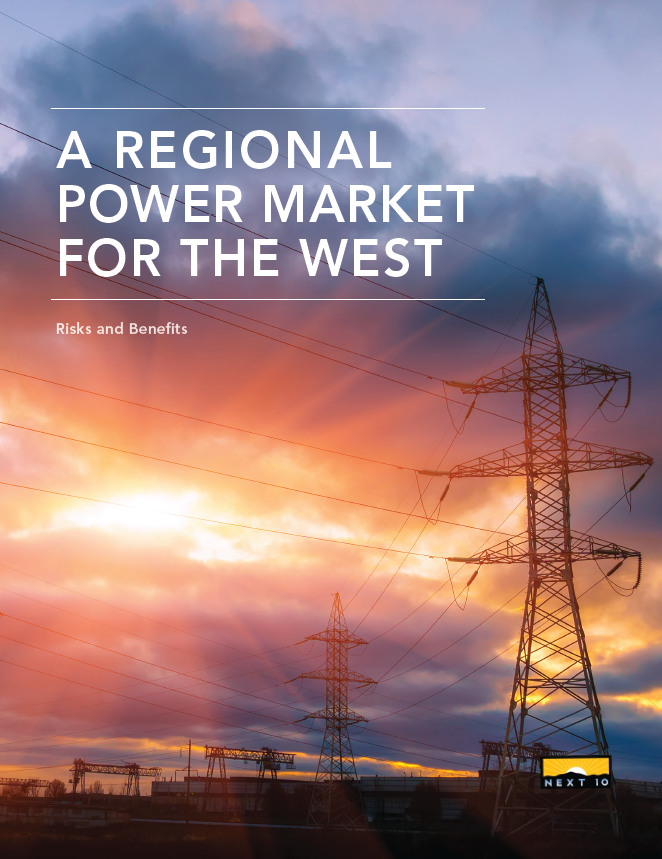Publications
A Regional Power Market for the West: Risks and Benefits
As the California legislature debates the state's energy future, A Regional Power Market for the West: Risks and Benefits takes a fresh look at the pros and cons of creating a Western regional grid, and illuminates the complexities that have helped stall bills addressing the issue over the past three years. Grid regionalization could change how and where renewables are built, bought and sold, with ramifications for energy markets in California and across the West.
The new report lays out arguments for and against expanding the western electricity market through the formation of a regional independent system operator (ISO). ISOs act as air traffic controllers for electricity, independently coordinating the planning and distribution of energy in a given area. Regional ISOs are common in most of the U.S., but in the West, the region is divided into a patchwork of individual operators, including the California Independent System Operator (CAISO). Pending legislation would set the rules for how California utilities could join a regional market.
Next 10 owns the rights to this publication. Any usage of content from this publication is subject to our Terms of Use. This report is part of Next 10's California Grid series.
After evaluating arguments on either side of the expanded Western RTO issue, the report offers takeaways on key topics of concern, including:
- Jobs — A Western RTO could result in some renewable energy construction jobs moving from California to other states, but it would likely create a much larger number of California jobs overall. That’s because increasing renewable generation across the region would lower electricity prices for all Californians, lowering costs for businesses and broadly encouraging job growth.
- Governance — While opponents worry that a regional transmission organization would force state policymakers to give up control, the state’s existing independent system operator, CAISO, is already independent of state control. All RTOs, including CAISO, are subject to FERC regulations and federal law. RTOs have limited ability to affect state policy decisions, and their actions are subject to FERC oversight. FERC, meanwhile, is subject to oversight by the courts.
- Policy — Because most court challenges to state policies happen under interstate commerce rules, a change to a Western RTO would not substantially change the threats to California’s pioneering climate and clean energy policies. As for FERC, their primary mandate is to provide “just and reasonable” rates through fair competition. As long as California clean energy policies don’t interfere with competition – and they generally haven’t so far – joining a Western RTO would not subject the state to additional risk from FERC.
- Integrating Renewables — There are many ways to integrate renewables into the grid, including distributed energy resources, whose costs are falling rapidly. But bulk solutions — such as transmission lines and regional markets — remain the lowest cost option.
- Coal — Despite concerns about the Trump administration’s support for propping up the coal industry, coal generation is in decline nationwide due in large part to being subject to competition with more affordable natural gas power, renewables, and energy efficiency. A Western RTO with truly competitive market rules would likely increase pressure on aging Western coal plants. However, policymakers must be sure to avoid market rules that allow old coal plants to survive, such as capacity payments.
